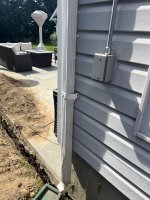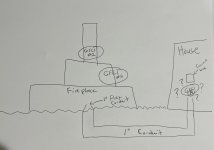I had a question about conduit. Masons are installing the fireplace but I’ll run the electric. I already install a box outside the house and have trenched and laid the conduit underground. My question is about what to use inside the fireplace (brick/concrete). I bought CPVC because of the higher heat tolerance. However I should be far away from the heat source. I would rather use that flexible conduit as it would be easier to run.
ANY ISSUES USING THE FLEXIBLE LIQUID TIGHT CONDUIT WITHIN THE BRICK (OUTDOOR) FIREPLACE?
Thanks!
ANY ISSUES USING THE FLEXIBLE LIQUID TIGHT CONDUIT WITHIN THE BRICK (OUTDOOR) FIREPLACE?
Thanks!


